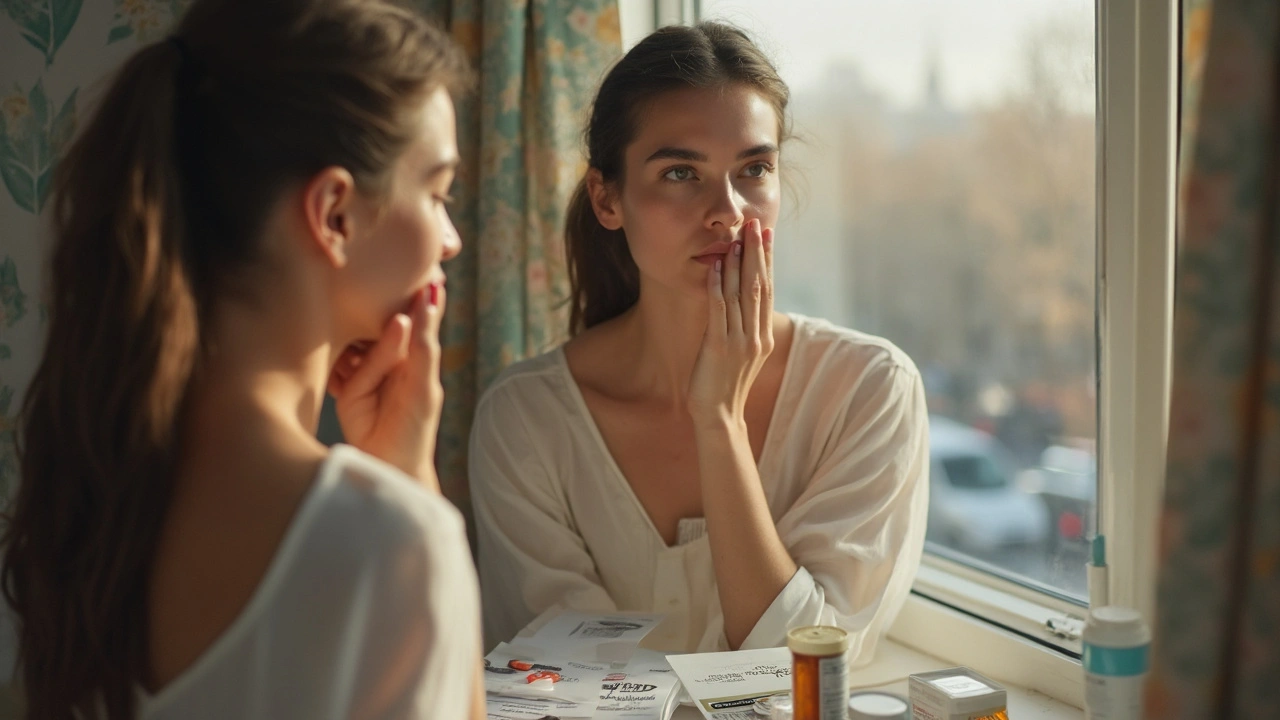Acne Treatment: Practical Options That Really Work
Acne doesn’t have to control your life. Whether you get occasional breakouts or persistent cysts, there are clear, proven steps you can try at home and with a doctor. This guide lists treatments, what to expect, and simple routines to speed healing.
Common Treatments That Work
For mild acne, start with over-the-counter products. Benzoyl peroxide kills acne bacteria and reduces inflammation—use 2.5% to 5% to limit irritation. Salicylic acid helps unclog pores and is gentle enough for daily use. If your skin is dry, choose gel or lotion formulas and add a light, non-comedogenic moisturizer.
When OTC options don’t cut it, prescription meds step in. Topical retinoids (adapalene, tretinoin) normalize skin cell turnover and prevent new pimples. Topical or oral antibiotics reduce bacteria and swelling but are best for short courses to avoid resistance. For severe nodules or scarring risk, oral isotretinoin can clear acne long-term—but it has strong side effects and needs close medical monitoring.
Hormonal treatment helps many adults with breakouts. Combination birth control pills can reduce acne linked to menstrual cycles. Spironolactone lowers androgen effects in women and often works when other treatments fail. Discuss risks and monitoring with your clinician before starting hormonal therapy.
Daily Routine and When to See a Doctor
Keep your routine simple. Wash your face twice daily with a gentle cleanser and lukewarm water. Avoid scrubbing or harsh exfoliants that make inflammation worse. Apply acne treatment after drying skin, and introduce one product at a time so you can spot irritation.
Hands off. Picking or popping speeds scarring and can spread bacteria. Use non-comedogenic makeup and clean tools regularly. Try to sleep on a clean pillowcase and avoid tight hats or masks that rub the face.
Expect results slowly. Most treatments take 6 to 12 weeks to show clear improvement. If you see no change after three months, or if acne is painful, widespread, or leaving scars, book a dermatologist visit. Early treatment reduces scarring risk and shortens recovery time.
Watch for side effects. Redness, peeling, and sun sensitivity are common with retinoids and benzoyl peroxide. Use sunscreen daily and lower product strength if irritation is severe. Pregnant people should avoid retinoids and isotretinoin; talk to your provider about safe alternatives.
Combining treatments often works best: a gentle cleanser, a retinoid at night, benzoyl peroxide in the morning, and sunscreen. Keep a brief log of products and changes—this helps your doctor fine-tune care. With patience and the right plan, most people see big improvements and fewer flare-ups.
If topical and oral meds aren't enough, in-office options help. Chemical peels, light therapy, and professional extractions can reduce inflammation and speed recovery. Dermatologists also offer cortisone injections for painful cysts—those can flatten a nodule in days. For old scars, treatments like microneedling, laser, and fillers give noticeable results but need multiple sessions and recovery time. Discuss cost, downtime, and realistic results with your provider. Also ask about combining in-office procedures with current meds; some therapies don't mix well.
Small changes matter: sleep, water, and stress control often lower flare-ups. Track triggers like dairy or whey supplements.

Accutane: The Real Story Behind the Popular Acne Treatment
Accutane has built a reputation as one of the most effective acne treatments available, but it’s also surrounded by myths and strong opinions. This article digs into what Accutane really is, how it works, and what it's like to use it—warts and all. We'll look at the science, possible side effects, real tips for success, and life after treatment. If you or someone you know is considering Accutane, here’s what to expect and why the talk about it is so intense.
